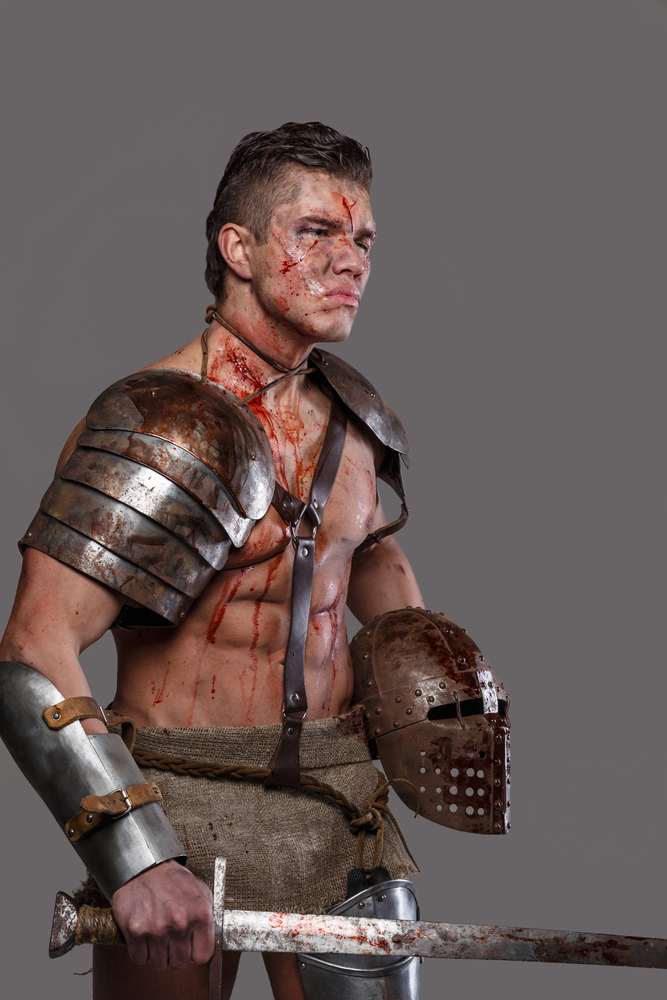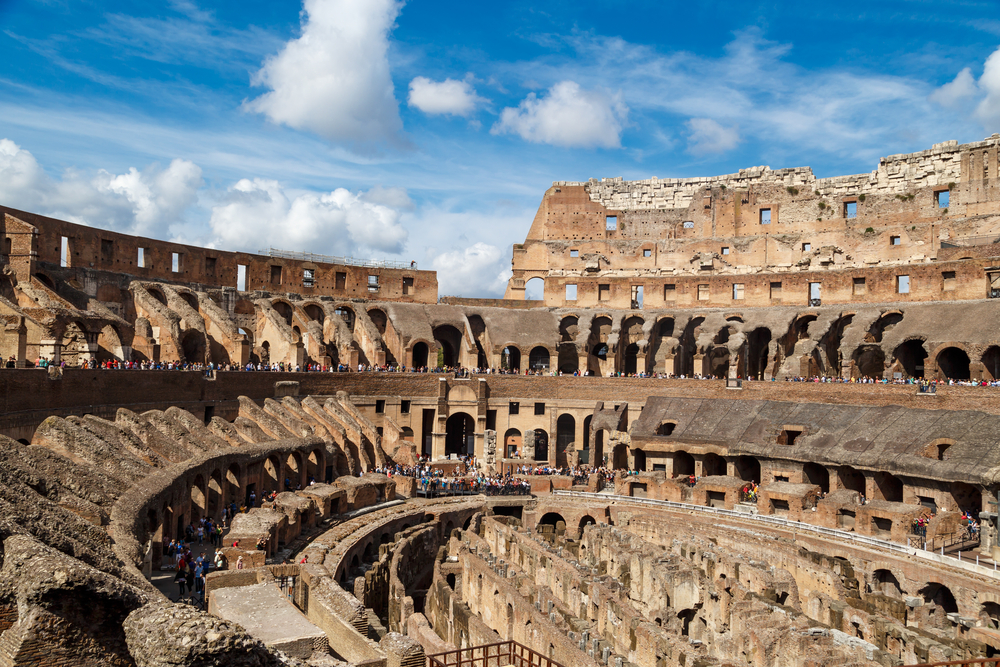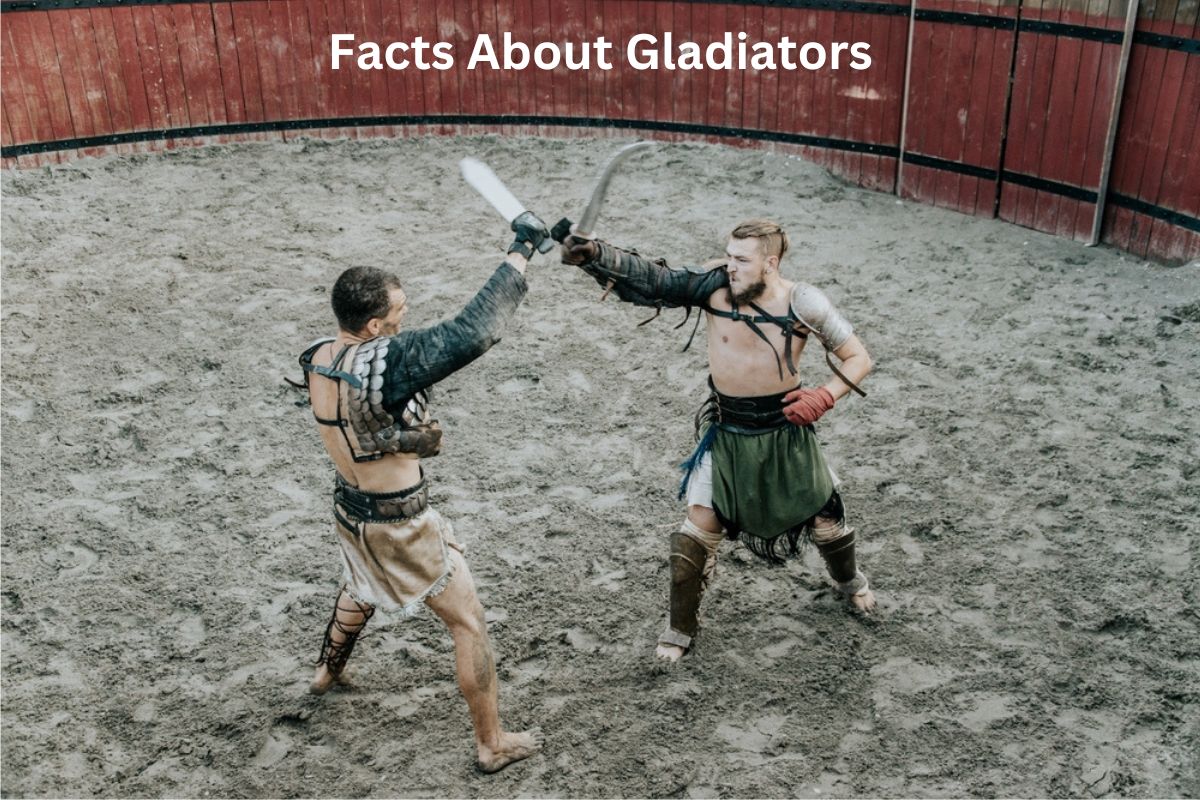Gladiators were professional fighters in ancient Rome who captivated audiences with their combat skills and bravery. They were typically slaves, prisoners of war, or criminals, and their fights took place in grand arenas like the Colosseum.
Gladiators wore distinctive armor and wielded various weapons, each type representing a unique fighting style. The fights were regulated and followed specific rules and rituals, with the crowd playing a significant role in determining the outcome.
Successful gladiators could gain fame, fortune, and even their freedom. However, as the influence of Christianity grew, gladiatorial games faced opposition, leading to their eventual prohibition in the 5th century AD.
Roman Gladiators Facts
1. Gladiators were professional fighters in ancient Rome
Gladiators were individuals who were trained and paid to engage in combat for the entertainment of spectators. They were distinct from regular soldiers or warriors, as their primary purpose was to entertain rather than engage in warfare.
Also Read: Facts About the Colosseum
Gladiators were seen as both skilled fighters and performers, captivating audiences with their displays of combat prowess.

2. They were typically slaves, prisoners of war, or criminals
Gladiators came from various backgrounds, but the majority of them were slaves or prisoners of war. Slaves were often trained and sent to the arena to fight on behalf of their owners.
Prisoners of war who were captured during Roman conquests were also conscripted into gladiatorial training. Additionally, some gladiators were criminals condemned to fight as a form of punishment or public spectacle.
3. Gladiators fought in arenas, such as the Colosseum
Gladiatorial combat took place in large amphitheaters, specifically designed to accommodate the fights and entertain massive audiences. The most iconic and grandiose arena was the Colosseum in Rome, which could hold up to 50,000 spectators.
These arenas had elaborate staging areas, underground passages, and trapdoors to enhance the spectacle and allow for various combat scenarios. The structure of the arenas ensured that all spectators had a clear view of the action unfolding in the center.
4. They were trained in specialized schools called “ludus”
These ludus were essentially training academies dedicated to shaping gladiators into skilled fighters. The gladiators-in-training, known as “novices” or “tiroes,” were placed under the guidance of experienced gladiators or trainers known as “doctores.”
The training in the ludus was physically demanding and aimed at developing the gladiators’ strength, agility, and combat skills. They practiced various combat techniques, honed their weapon proficiency, and engaged in simulated fights and sparring sessions.
The training also included physical conditioning exercises, endurance drills, and combat strategy lessons.
Gladiators were subjected to strict discipline and a rigorous regimen, emphasizing obedience, mental fortitude, and resilience. They were trained to endure pain and hardship, preparing them for the brutal and often life-or-death nature of their fights in the arena.
5. Gladiators wore different types of armor and used various weapons
Gladiators were typically equipped with specific types of armor and weaponry that were associated with their particular fighting style.
Some popular gladiator types included the murmillo, who wore a helmet with a fish-shaped crest and carried a short sword and a large rectangular shield; the secutor, who had a round shield, a short sword, and a distinctive helmet with a rounded top; and the retiarius, who fought with a trident and a net, wearing minimal armor.
The Thracian gladiator was another well-known type, recognizable by their distinctive curved sword called a sica.

6. The fights were regulated and had specific rules and rituals
Gladiatorial combat was highly organized and followed a set of rules. The event organizers and trainers ensured the safety of the gladiators to some extent, implementing regulations on the type and quality of weapons used.
The fights themselves had a structured sequence of events, including an opening procession where the gladiators would make their entrance, saluting the emperor or high-ranking officials.
Ceremonial gestures and rituals would take place, often involving the symbolic clash of weapons before the actual combat commenced.
7. The outcome of a fight was often decided by the spectators
Unlike modern combat sports where victory is determined by judges or a knockout, gladiatorial fights often relied on the audience’s decision.
Spectators would express their preferences by using hand gestures or shouting, indicating whether they wanted a defeated gladiator to be spared or killed.
The final decision, however, ultimately rested with the event organizers or the emperor in some cases. The crowd’s reaction played a significant role in shaping the fate of the defeated gladiator, adding an element of uncertainty and excitement to the fights.
8. Successful gladiators could gain fame, fortune, and freedom
Although gladiators were often enslaved or considered lower in societal status, a successful career in the arena could bring them glory, admiration, and rewards.
A renowned gladiator who won many fights could amass a fan base and earn significant sums of money. Wealthy patrons might even sponsor successful gladiators, which could lead to better living conditions and opportunities for advancement.
In some cases, gladiators could be granted their freedom after a certain number of victories or upon the completion of their contracted service.
9. Gladiators became celebrities and had fan bases in ancient Rome
Gladiators, especially those who achieved significant success or displayed exceptional skills, became celebrities in ancient Rome. They garnered a considerable following and developed devoted fan bases.
People admired and idolized these fighters, who were often seen as symbols of strength, bravery, and resilience. The exploits of famous gladiators were documented and celebrated in ancient literature, inscriptions, and artwork, leaving a lasting legacy.
10. Gladiatorial games declined and were eventually prohibited in the 5th century AD
Gladiatorial games, which had been a central part of Roman entertainment for centuries, began to face opposition and criticism. As the influence of Christianity grew, the violent nature of the gladiatorial games clashed with the values of the new faith.
Christian leaders condemned the brutality and loss of life in the arena, and public opinion gradually turned against the spectacles. The gladiatorial games were officially prohibited by Emperor Honorius in the late 4th century AD, marking the end of this ancient form of entertainment.
